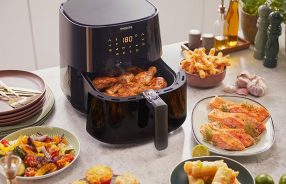FIFO: What the First In, First Out Method Is and How to Use It
In theory, this means the oldest inventory gets shipped out to customers before newer inventory. It is a method used for cost flow assumption purposes in the cost of goods sold calculation. The FIFO method assumes that the oldest products in a company’s inventory have been sold first. The costs paid for those oldest products are the ones used in the calculation. FIFO is a widely used method to account for the cost of inventory in your accounting system. It can also refer to the method of inventory flow within your warehouse or retail store, and each is used hand in hand to manage your inventory.
When Susan first opened her pet supply store, she quickly discovered her vegan pumpkin dog treats were a huge hit and bringing in favorable revenue. But when it was time to replenish inventory, her supplier had increased prices. In the United States, a business has a choice of using either the FIFO (“First-In, First Out”) method or LIFO (“Last-In, First-Out”) method when calculating its cost of goods sold. https://intuit-payroll.org/ Both are legal although the LIFO method is often frowned upon because bookkeeping is far more complex and the method is easy to manipulate. To calculate COGS (Cost of Goods Sold) using the FIFO method, determine the cost of your oldest inventory. In some countries, FIFO is the required accounting method for keeping track of inventory, and it is also popular in countries where it is not mandatory.
Due to inflation, the more recent inventory typically costs more than older inventory. With the FIFO method, since the lower value of goods are sold first, the ending inventory tends to be worth a greater value. Since ecommerce inventory is considered an asset, you are responsible for calculating COGS at the end of the accounting period or fiscal year. Ending inventory value impacts your balance sheets and inventory write-offs. To calculate the value of ending inventory, the cost of goods sold (COGS) of the oldest inventory is used to determine the value of ending inventory, despite any recent changes in costs.
- A few weeks later, they buy a second batch of 100 mugs, this time for $8 apiece.
- The Ladies of the Orient (LOTO), an appendant body of the Daughters of Rebekahs, similarly confers two degrees.
- FIFO, on the other hand, is the most common inventory valuation method in most countries, accepted by IFRS International Financial Reporting Standards Foundation (IRFS) regulations.
- As such, many businesses, including those in the United States, make it a policy to go with FIFO.
- Though there are financial implications of their decision, some companies may choose a method that mirrors their inventory (i.e. a grocer often sells their oldest inventory first).
According to the FIFO cost flow assumption, you use the cost of the beginning inventory and multiply the COGS by the amount of inventory sold. Though it’s the easiest and most common valuation method, the downside of using the FIFO method is it can cause major discrepancies when COGS increases significantly. It’s important to note that FIFO is designed for inventory accounting purposes and provides a simple formula to calculate the value of ending inventory. But in many cases, what’s received first isn’t always necessarily sold and fulfilled first. The “inventory sold” refers to the cost of purchased goods (with the intention of reselling), or the cost of produced goods (which includes labor, material & manufacturing overhead costs). Let’s say that a new line comes out and XYZ Clothing buys 100 shirts from this new line to put into inventory in its new store.
First In, First Out, commonly known as FIFO, is an asset-management and valuation method in which assets produced or acquired first are sold, used, or disposed of first. The Celsius temperature range was originally defined by setting zero as the temperature at which water froze. Zero degrees C was later redefined as the temperature at which ice melts. The other point at which Celsius was set – 100 degrees Celsius – was defined as the boiling point of water.
The First-In-First-Out, or FIFO method, is a standard accounting practice that assumes that assets are sold in the same order that they are bought. In some jurisdictions, all companies are required to use the FIFO method to account for inventory. But even where it is not required, it is a popular standard due to its ease and transparency. Also, because the newest inventory was purchased at generally higher prices, the ending inventory balance is inflated.
Celsius to Fahrenheit conversion formula
FIFO helps businesses to ensure accurate inventory records and the correct attribution of value for the cost of goods sold (COGS) in order to accurately pay their fair share of income taxes. There are also balance sheet implications between these two valuation methods. Because more expensive inventory items are usually sold under LIFO, these more expensive inventory items are kept as inventory on the balance sheet under FIFO. Not only is net income often higher under FIFO, inventory is often larger as well. Though both methods are legal in the US, it’s recommended you consult with a CPA, though most businesses choose FIFO for inventory valuation and accounting purposes. It offers more accurate calculations and it’s much easier to manage than LIFO.
FIFO vs. Specific Inventory Tracing
Buyers can choose from a range of options and tailor their package to meet their specific needs and budget. In addition to providing valuable benefits for buyers, F&I products also drive revenue for the dealership. Each product sold generates additional profit for the dealership, which can help offset the cost of operating the business and increase overall profitability. By using the FIFO method, you would calculate the COGS by multiplying the cost of the oldest inventory units with the number of units sold. For inventory tracking purposes and accurate fulfillment, ShipBob uses a lot tracking system that includes a lot feature, allowing you to separate items based on their lot numbers.
FIFO also often results in more profit, which makes your ecommerce business more lucrative to investors. For some companies, FIFO may be better than LIFO as this method may better represent the physical flow of inventory. If the company acquires another 50 units of inventory, one may presume that the company will try to sell the older inventory items first.
Who is in charge of F&I?
Many businesses prefer the FIFO method because it is easy to understand and implement. This means that statements are more transparent, and it is harder to manipulate FIFO-based accounts to embellish the company’s financials. For this reason, FIFO is required in some jurisdictions under the International Financial Reporting Standards, and it is also standard in many other jurisdictions. Finally, specific inventory tracing is used when all components attributable to a finished product are known. If all pieces are not known, the use of FIFO, LIFO, or average cost is appropriate. This may occur through the purchase of the inventory or production costs, the purchase of materials, and the utilization of labor.
Read on for a deeper dive on how FIFO works, how to calculate it, some examples, and additional information on how to choose the right inventory valuation for your business. The biggest disadvantage to using FIFO is that you’ll likely pay more in intuit extension taxes than through other methods. This is because the cost of goods typically increases over time so when you sell something in the present day and attribute your COGS to what you purchased it for months prior, your profit will be maximized.
Resources for Your Growing Business
The FIFO method follows the logic that to avoid obsolescence, a company would sell the oldest inventory items first and maintain the newest items in inventory. Although the actual inventory valuation method used does not need to follow the actual flow of inventory through a company, an entity must be able to support why it selected the use of a particular inventory valuation method. FIFO is calculated by adding the cost of the earliest inventory items sold. For example, if 10 units of inventory were sold, the price of the first 10 items bought as inventory is added together. Depending on the valuation method chosen, the cost of these 10 items may be different. Under the FIFO method, the earliest goods purchased are the first ones removed from the inventory account.
It also means the company will be able to declare more profit, making the business attractive to potential investors. For instance, if a business sold 100 units of an item, and 75 units were originally purchased by the company at $10.00 and 25 units were purchased at $15.00, it cannot assign the $10.00 cost price to every unit sold. The remaining 25 items must be assigned to the higher price, the $15.00. First in, first out (FIFO) is an inventory method that assumes the first goods purchased are the first goods sold.
The Ladies of the Orient (LOTO), an appendant body of the Daughters of Rebekahs, similarly confers two degrees. For Rebekahs, one lodge degree, one encampment degree, and one Ladies Auxiliary Patriarchs Militant (LAPM) degree are conferred. In the IOOF system, different degrees are conferred depending on whether one is initiated into the Daughters of Rebekah or the Oddfellows proper. The Independent Order of Odd Fellows was founded in Estonia when 1 Odd Fellows Lodge was founded by the Grand Lodge of Finland in 1993 and a Rebekah lodge in 1995.





